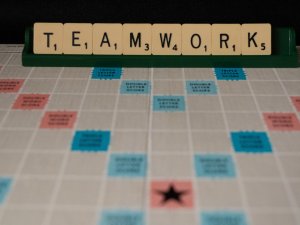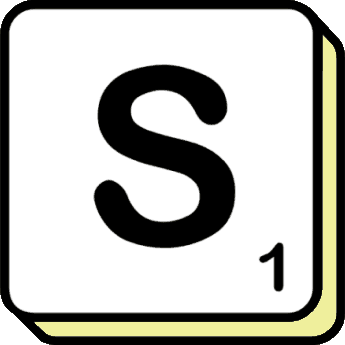Wordplay in Literature
Author: Brian Bowman
Date Published: 2 June 2023
Language, with its intricate nuances and boundless possibilities, is a captivating tool in the hands of skilled writers. Wordplay, a delightful technique employed in literature, adds a layer of charm and amusement to the written word. From puns and double entendres to witty allusions and clever wordplay, this artistic craft has been employed by literary geniuses across time and cultures. In this blog article, we will embark on a journey to explore the world of wordplay in literature, discovering its various forms, significance, and the authors who have mastered its art.

The Power of Puns
Puns, often regarded as the simplest form of wordplay, can be found in a plethora of literary works. These play on multiple meanings of words or exploit their phonetic similarity to create humorous or thought-provoking effects. Shakespeare, a master of wordplay, used puns extensively in his plays, adding wit and depth to his characters. A classic example is the pun-filled dialogue in "Romeo and Juliet" between Mercutio and Romeo, where they engage in a playful banter of double entendres and clever wordplay.
Double Entendres and Innuendos
Double entendres and innuendos are forms of wordplay that rely on ambiguous or suggestive language. They create layers of meaning, often with a touch of humor or risqué undertones. Oscar Wilde, known for his sharp wit, expertly employed double entendres in his play "The Importance of Being Earnest," where the characters engage in witty wordplay, blurring the lines between sincerity and satire.
Allusions and Literary References
Wordplay can extend beyond word manipulation to encompass allusions and references to other literary works. Writers often incorporate clever references to famous works, creating an intertextual web that adds depth and richness to their own narratives. James Joyce's masterpiece, "Ulysses," is a prime example of this, as he skillfully weaves allusions to Greek mythology, Shakespearean plays, and other works of literature into the fabric of his novel, inviting readers to engage in a treasure hunt of intellectual delight.
Anagrams and Palindromes
Anagrams and palindromes are playful forms of wordplay that involve rearranging or reversing letters to create new words or phrases. Lewis Carroll, in his timeless novel "Alice's Adventures in Wonderland," introduced an eccentric character called the "Mad Hatter." Carroll masterfully used anagrams in the Hatter's nonsensical riddles, leaving readers entertained and challenged to decipher the hidden meanings within.
Satire and Parody
Wordplay can also be employed as a tool for satire and parody, allowing authors to criticize and satirize societal norms, institutions, or individuals through clever word manipulation. Jonathan Swift's satirical novel "Gulliver's Travels" is a brilliant example of this. By creating fictional lands with names like Lilliput and Brobdingnag, Swift mocks political systems and social conventions of his time, employing wordplay to emphasize his critiques.
Wordplay in literature is a testament to the versatility and creativity of language. Through puns, double entendres, allusions, anagrams, and satire, writers have harnessed the power of words to entertain, provoke thought, and convey deeper meanings. Whether it's the wit and charm of Shakespeare or the intellectual puzzles woven by modern authors, wordplay continues to captivate readers, inviting them to engage with the text on multiple levels. So, let us embrace the magic of wordplay in literature, celebrating the artistry and ingenuity that make language an endless source of delight and discovery.
Remember, that the next time you embark on a literary adventure, keep an eye out for the subtle wordplay tucked within the pages. The clever puns, the playful innuendos, and the subtle allusions will enhance your reading experience, unveiling new layers of meaning and sparking moments of joy and intellectual stimulation.
Wordplay in literature serves multiple purposes. It can add humor, making us chuckle at the cleverness of the author. It can also create depth and complexity, allowing for multiple interpretations and encouraging readers to engage actively with the text. Furthermore, wordplay can be a tool for social commentary, allowing writers to highlight the absurdities of the world we live in or to satirize individuals and institutions.
The mastery of wordplay requires a deep understanding of language, its intricacies, and its possibilities. It demands a keen sense of timing and an ability to manipulate words effortlessly. Just as a skilled musician can play with melody and rhythm to create beautiful compositions, a skilled writer can play with words to craft literary masterpieces.
While wordplay is often associated with humor, it can take on various forms and tones. It can be lighthearted and whimsical, as seen in children's literature, where authors like Dr. Seuss or Roald Dahl dazzle us with their imaginative wordplay. It can also be sophisticated and thought-provoking, as demonstrated by writers like James Joyce or Vladimir Nabokov, who challenge readers with intricate word puzzles and linguistic acrobatics.
Moreover, wordplay transcends cultural boundaries, as different languages and cultures offer unique opportunities for linguistic creativity. Translating wordplay from one language to another can be a challenging task, as the nuances and playfulness of the original language may be lost. Nonetheless, skilled translators strive to capture the essence of wordplay, adapting it to the target language while maintaining the spirit and impact of the original work.
In conclusion, wordplay in literature is a delightful and captivating technique that adds depth, humor, and intellectual stimulation to the written word. From puns to allusions, anagrams to satire, it showcases the versatility of language and the ingenuity of writers. So, the next time you immerse yourself in a novel, a play, or a poem, keep an ear tuned for the playful melodies of wordplay. Allow yourself to be enchanted by the linguistic magic that unfolds before your eyes, and relish in the beauty of language dancing on the pages of literature.
